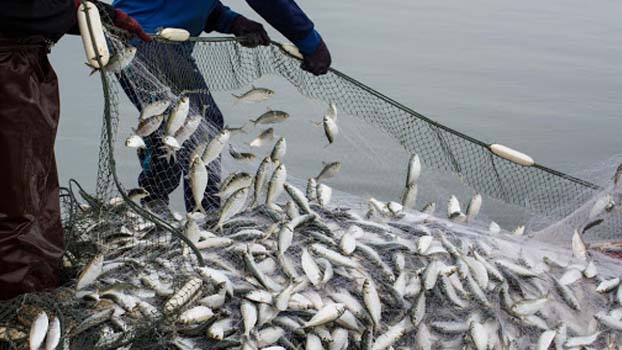New methods to increase fish harvest

Researchers have developed at least 20 new methods to increase production of various species of fish in the country over the past 36 years.
The Chandpur Fisheries Research Institute was established in 1984 on a 17 hectare piece of land between the Wireless Bazar junction of Cumilla Road and Government Technical High School in Chandpur city.
To increase fish production, researchers at the Chandpur Fisheries Research Institute have invented 20 new farming methods in three eras.
Although research on the cultivation of hilsa in ponds was unsuccessful initially, the relentless efforts of the researchers have resulted in the declining hilsa production more than doubling in a decade and a half. As a result, the tradition of hilsa has returned and its economic importance increased.
In addition to the success of hilsa research in Chandpur, Bangladesh has acquired the Geographical Indication (GI) of hilsa in 2017.
Three institutes have been set up there together called River Water Fisheries Research Center, Technological Laboratory and Immunological Disease Lab. There are two more research centers as sub-centers of Chandpur river basin, known as Rangamati river sub-center and Khepupara river sub-center of Patuakhali.
The Chandpur Fisheries Research Center has already developed technologies for the development and conservation of hilsa resources, identification of natural breeding grounds for carp species of fish and fry production technology.
Hilsa researcher, Dr Md Anisur Rahaman, chief scientific officer of Bangladesh Fisheries Research Institute, Chandpur, said that at present, the production of hilsa in the country has exceeded 5 lakh 33 thousand tons. He has been researching hilsa for three decades.
“Besides, the scientists of the BFRI have been the first in the country to successfully breed Thai pangas, manage and plan for hilsa fish and invent fish farming in cages.”
Anisur Rahman further said that the institute has come up with a number of new technologies. Among them, research on hilsa and fish farming in cages is one. In 2017, Bangladesh was recognized as a GI (Geographical Indication) product of hilsa fish. More than 75% of the world's hilsa is being collected in Bangladesh.
Chandpur River Research Center is working on five research projects. These are research of hilsa fish, semi-natural breeding, effects of river water pollution on production of Rui-Katal fish fry in Halda river, assessment of impact of climate change on commercially important fish of river and habituation and cultivation of Boal fish in reserved water.




